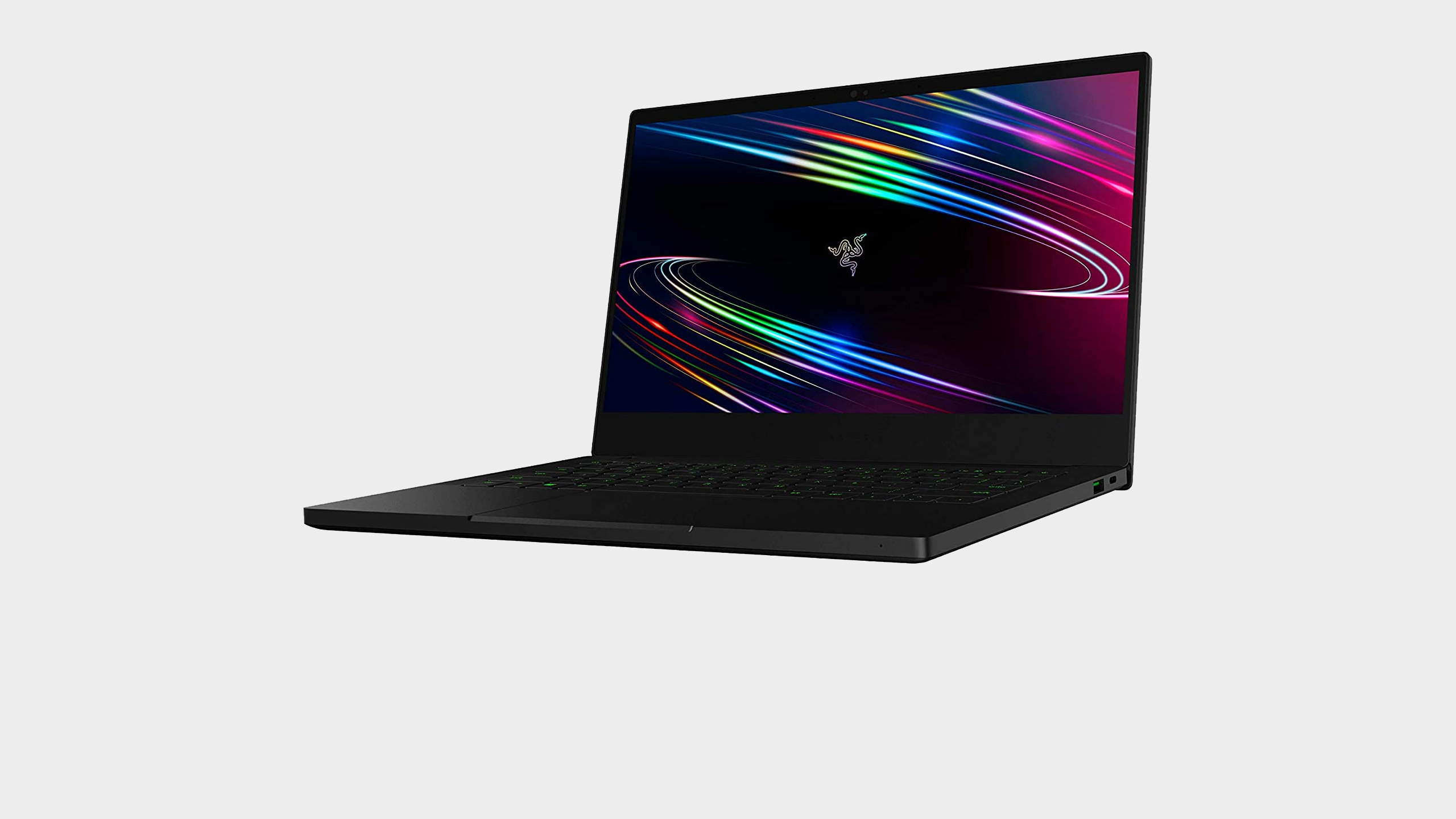Our Verdict
A beautifully, if rather financially unattainable, slimline gaming ultrabook. Yes, thanks to Razer, that IS a thing.
For
- Slim unibody chassis
- Stunning FHD OLED panel
- Actual discrete GPU gaming performance
Against
- Definitely not a value prospect
- GTX 1650 Ti looks rather last gen right now
PC Gamer's got your back
The Razer Blade Stealth 13 is, at its heart, all about ultrabook elitism. This lightweight wee laptop has always been priced outside the normal bounds of either equivalent, chunkier gaming notebooks, or ultrabooks of similar CPU specs. It's Razer's most obvious nod to the unibody MacBook—but in resolutely black trim—and sports a similar if-you-have-to-ask price tag.
The latest version of the 13-inch Razer machine is practically identical to the previous iterations, but with a couple of key, welcome additions. You still get 16GB DDR4 memory, in dual-channel configuration, and you still get a speedy 512GB SSD at its heart. The Ice Lake version I originally played with came sporting the straight GTX 1650 Max-Q variant, while the late 2020 Tiger Lake Stealth 13 comes with the updated GTX 1650 Ti Max-Q discrete GPU which Razer later shifted to.
That makes it the most powerful discrete graphics silicon you'll find in any 13-inch ultrabook currently on the market. The closest you might get are some MX350/MX450 machines, but they don't get that close.
The difficulty is that, even back looking at this machine when it launched at the end of 2020, the GTX 1650 Ti is old news. As soon as the RTX 30-series cards launched on the desktop we've been waiting for their notebook variants to arrive, and they've just been unveiled at CES 2021.
CPU: Intel Core i7 1165G7
GPU: Nvidia GTX 1650 Ti
Memory: 16GB DDR4 (dual-channel soldered)
Storage: 512GB PCIe SSD
Screen: 13.3-inch OLED
Native resolution: 1920 x 1080
Refresh: 60Hz
Battery: 53.1 WHr
MSRP: $1,999.99
Given that MSI has now shown off its own Stealth 15M, which comes with an Nvidia RTX 3060 in its base model, it looks like the green team's new GPUs are capable of fitting inside a 0.63-inch thin chassis without sweating their silicon nuts off. Though the Razer Blade Stealth 13 is actually even thinner than that, so I'm not sure if even Nvidia's current lowest spec mobile Ampere GPU could sit comfortably inside this svelte aluminium shell.
The Tiger Lake processor, however, is more welcome. The Core i7 1165G7 is running at its current 28W best—though with the level of cooling the slimline chassis affords it can't quite hit the heights our pre-production Intel test notebook showed last year—but that still means it dominates the Ice Lake i7 from the previous generation.
That's true in both single and multi-threaded trim too. In fact the single-core score is quite spectacular for an ultrabook, and shows just why Intel has targeted the Tiger Lake H35-series of mobile chips to go into actual gaming laptops and not just these sort of ultra lightweight models. Indeed, that skinny new MSI machine is promising to pair the Special Edition 35W chip with its RTX 3060, which will make it a hell of a gaming machine. At 15 inches though, we can't really call that an ultrabook.
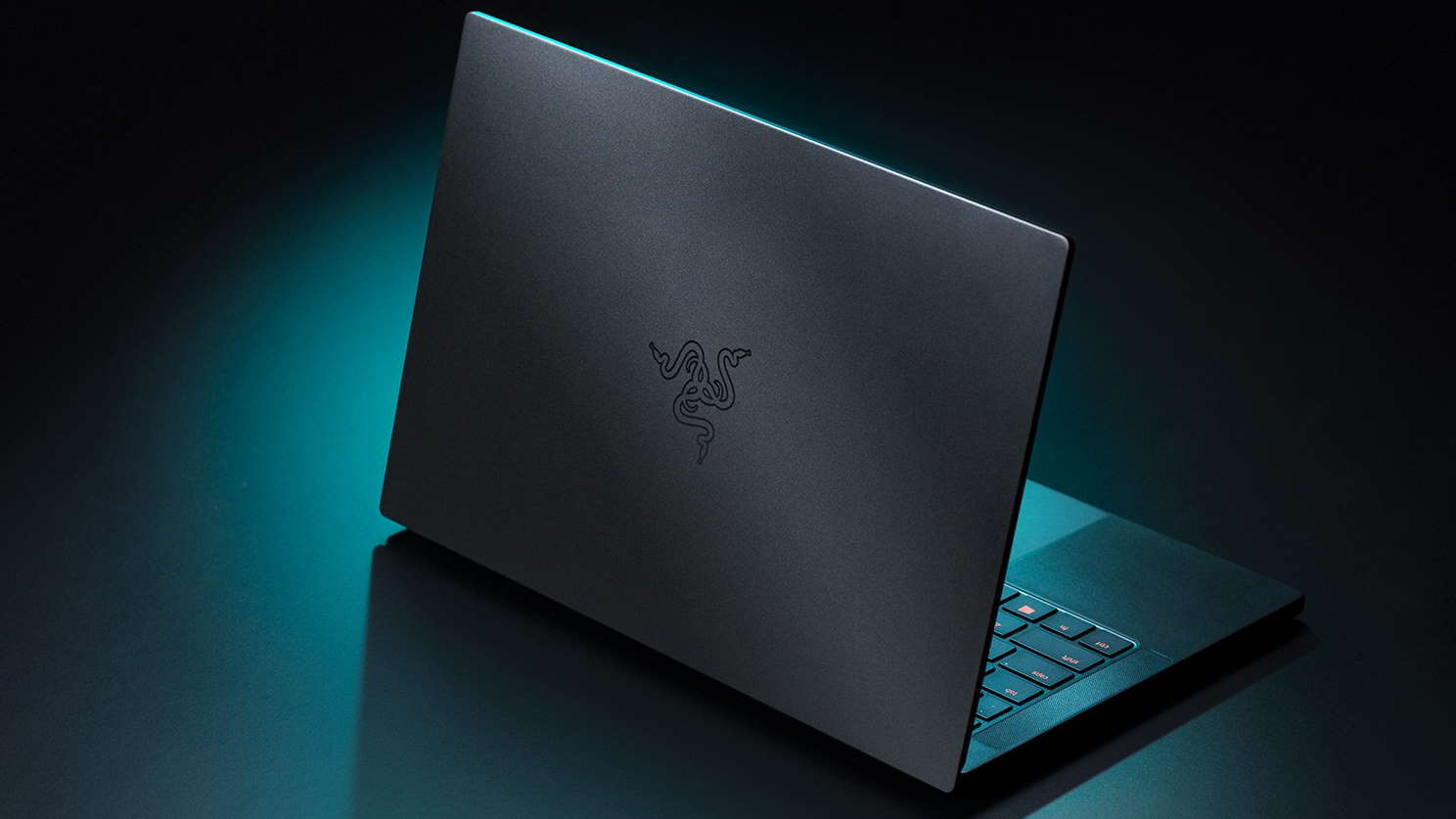
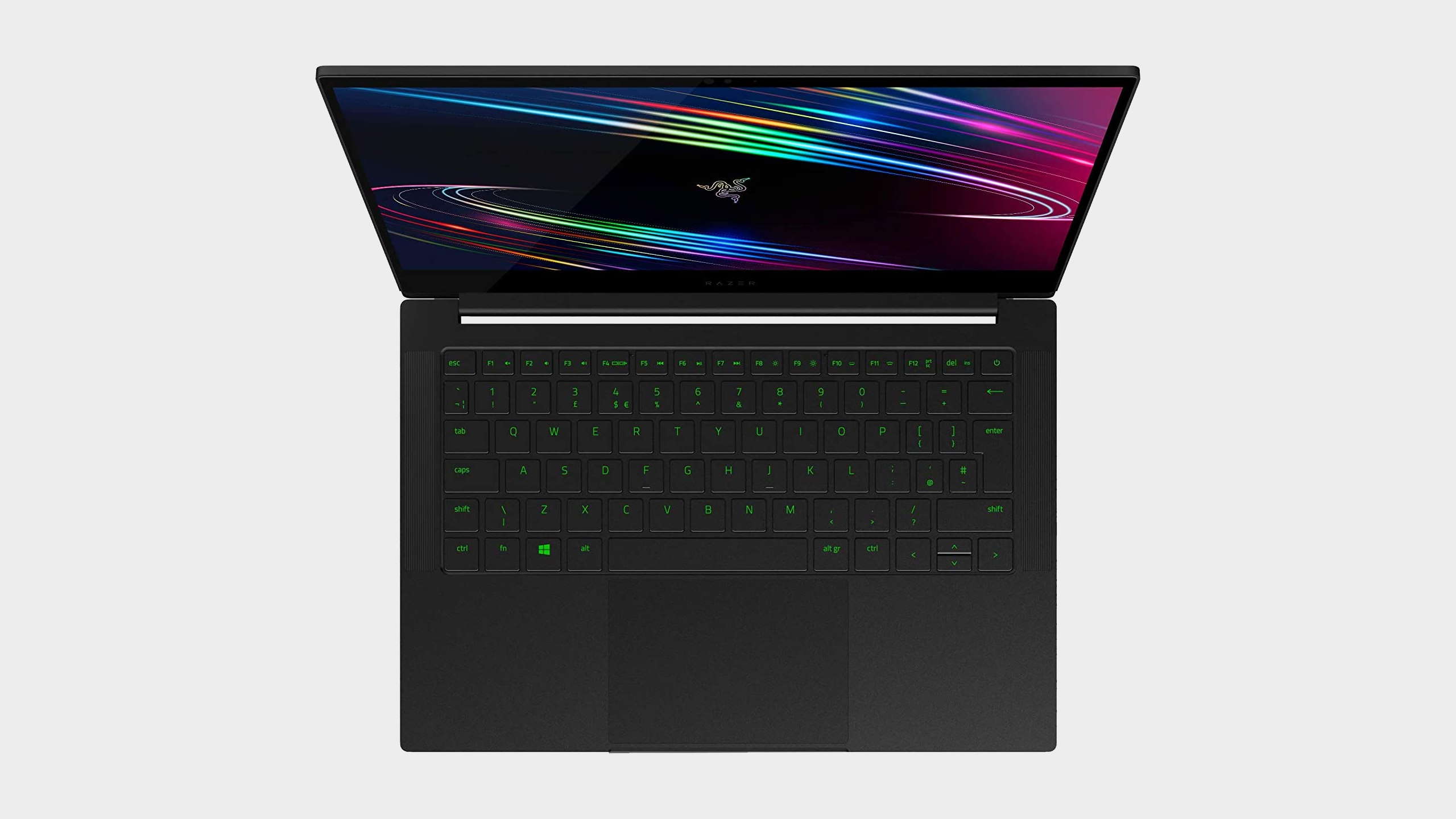
Razer Blade Stealth 13 benchmarks
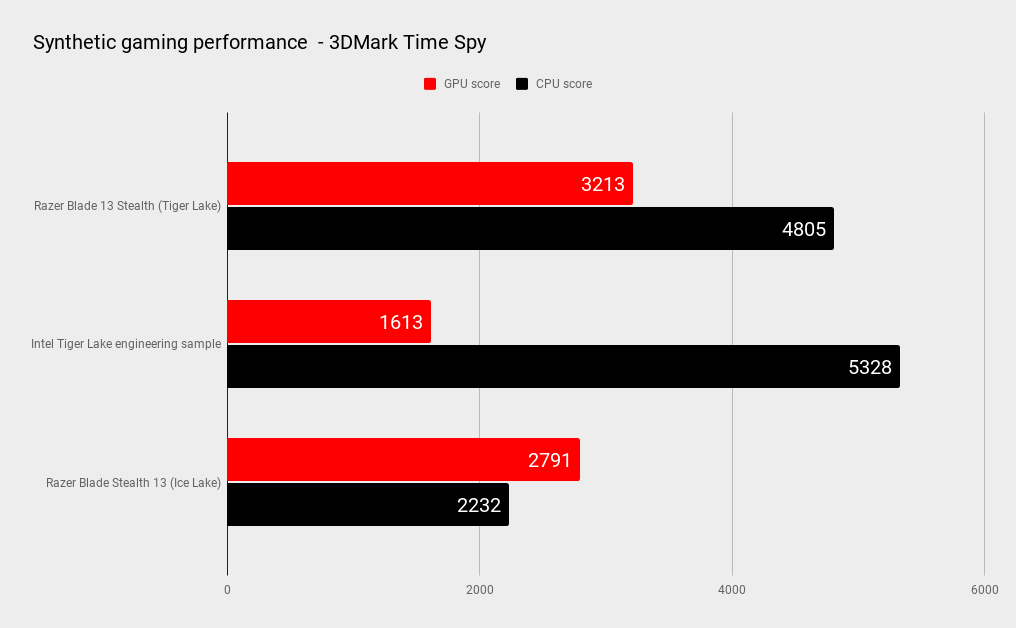
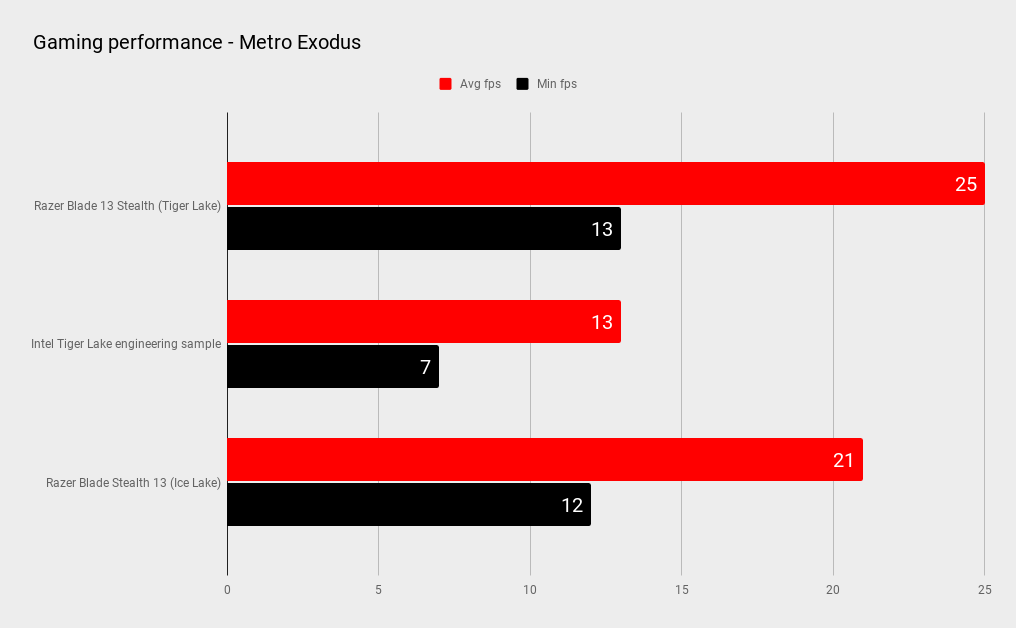
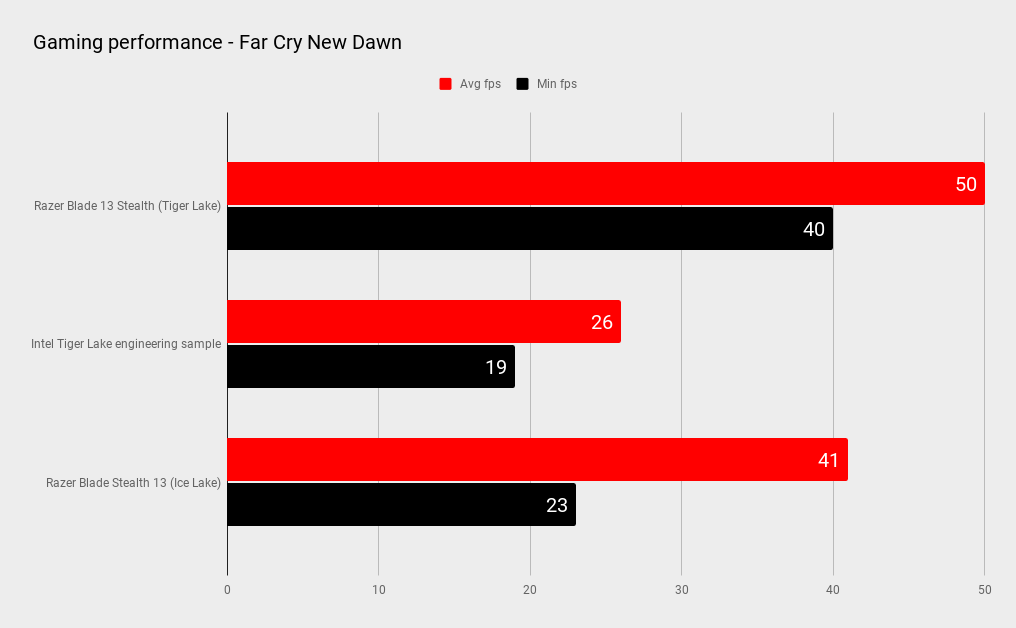
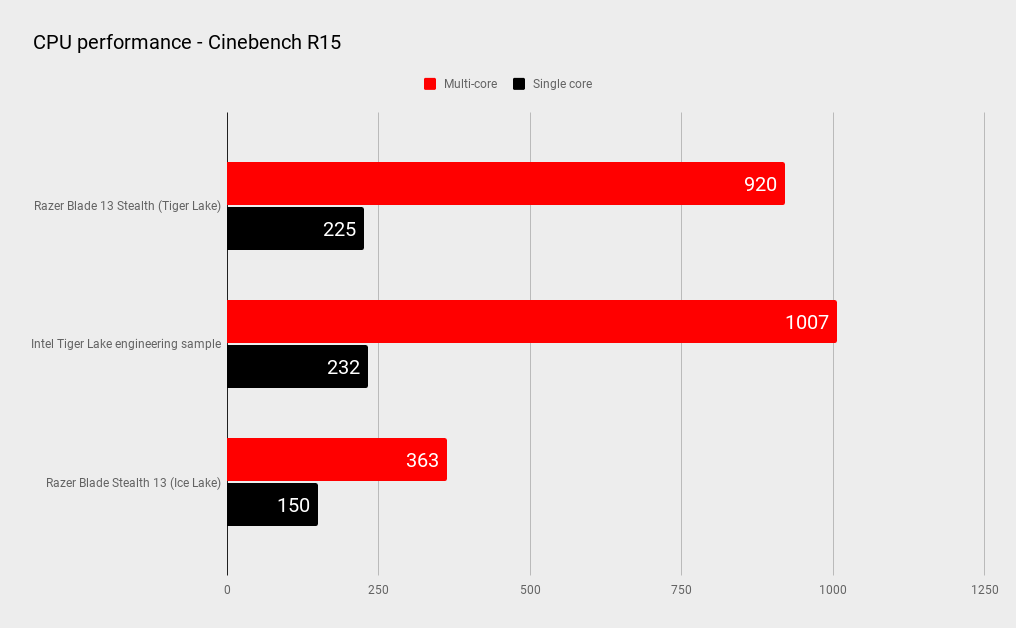
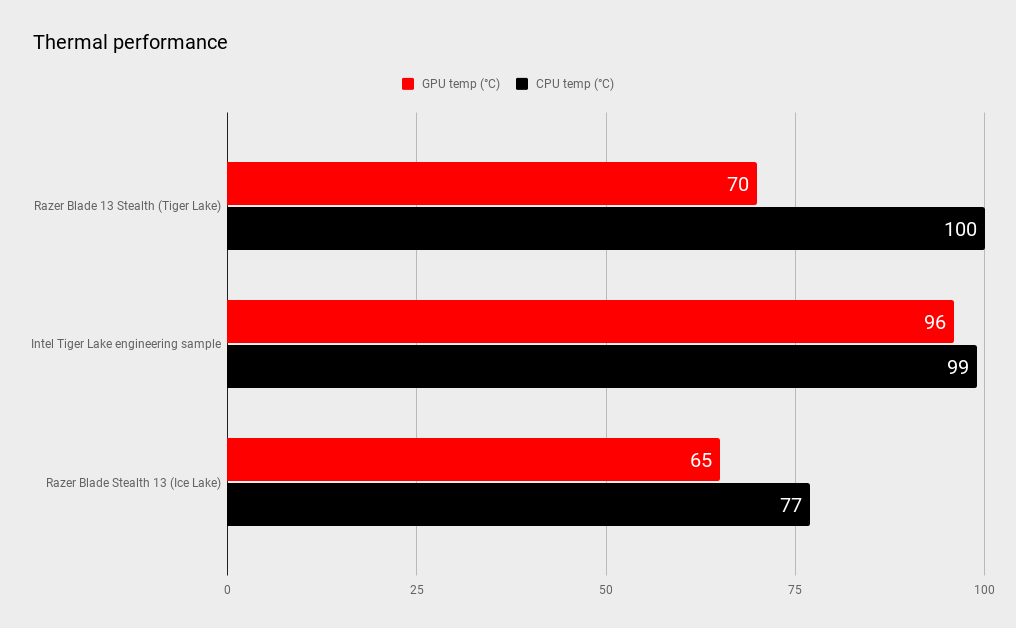
This, then, is as close as you're going to get to a genuine gaming ultrabook—Razer itself has made no noises yet about a next-gen replacement for this Stealth 13, despite introducing its new Blade range at CES—and what this wee Blade does in-game, it does well. You are, obviously, going to have to make concessions to the low-spec GPU here, so don't think you're going to match its 1080p screen with Ultra settings in the latest games.
That said, we did hit an average 50fps with Far Cry New Dawn running at its Ultra 1080p best, and on this FHD OLED screen its over-saturated colour palette really pops. With our Metro Exodus and The Division 2 tests, however, we're closer to the 30fps mark, and that means you're really going to have to measure your settings goals against the entry-level GPU silicon.
The battery life is maybe a little disappointing, however. At just one hour and ten minutes of actual gaming time, this isn't necessarily nailing that portable gaming machine ideal.
But, considering this is the smallest, lightest, thinnest gaming laptop around you're likely already at peace with those expectations. Razer has got you covered anyways if you want to spend $2,000 on a 15-inch machine that will eat 1080p gaming for breakfast.

Yeah, $2,000. I did say it was if-you-have-to-ask pricing. And that does include the $200 OLED premium for having that stunning FHD display attached to it, even if it has to be limited to 60Hz for the sexiest panel tech. Though having used it I'm almost tempted to say it's worth the money, but trying to talk about such foolish notions as 'value' immediately go out of the window the second you pick up a laptop at this price with a GTX 1650 Ti inside it.
I will say that I do appreciate the fact that Razer does offer the option to have the OLED screen in FHD trim and not just in the 4K resolution it used to limit you to. This machine should really not be matched with a UHD panel, it simply does not have the silicon chops to deal with it in anything other than a Windows desktop.
Despite its financial faults I can't help but love it, however much I would struggle to recommend it to anyone concerned about the state of their bank balance. This solid, slimline gaming ultrabook is still just about the stuff of silicon dreams, though that is somewhat tempered by the glimpse of the mobile future we've been promised by CES this year.
A beautifully, if rather financially unattainable, slimline gaming ultrabook. Yes, thanks to Razer, that IS a thing.

Dave has been gaming since the days of Zaxxon and Lady Bug on the Colecovision, and code books for the Commodore Vic 20 (Death Race 2000!). He built his first gaming PC at the tender age of 16, and finally finished bug-fixing the Cyrix-based system around a year later. When he dropped it out of the window. He first started writing for Official PlayStation Magazine and Xbox World many decades ago, then moved onto PC Format full-time, then PC Gamer, TechRadar, and T3 among others. Now he's back, writing about the nightmarish graphics card market, CPUs with more cores than sense, gaming laptops hotter than the sun, and SSDs more capacious than a Cybertruck.
